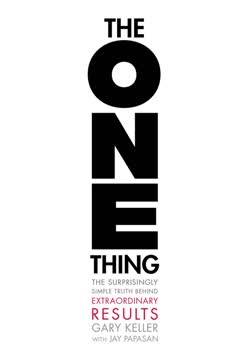Key Takeaways
1. Public speaking is a powerful tool for sharing ideas and changing minds
Ideas that could solve our toughest problems often remain invisible because the brilliant people in whose minds they reside lack the confidence or the know-how to share those ideas effectively.
Ideas have power. Throughout history, the ability to communicate ideas effectively has been a driving force behind human progress. From ancient campfire stories to modern TED Talks, public speaking has been a crucial tool for spreading knowledge, inspiring action, and shaping the world around us.
Speaking amplifies impact. In today's interconnected world, a single talk can reach millions of people, potentially changing lives and influencing society on a grand scale. This democratization of idea-sharing means that anyone with a valuable insight or solution has the potential to make a significant impact, regardless of their background or status.
Benefits of effective public speaking:
- Builds confidence and credibility
- Inspires and motivates others
- Catalyzes change and action
- Advances careers and opens opportunities
- Contributes to collective knowledge and understanding
2. Crafting a compelling throughline is essential for an effective talk
Every talk should have one.
Focus is crucial. A throughline is the connecting theme that ties together all elements of a talk, providing a clear and coherent structure. It helps the audience follow the speaker's argument or narrative, ensuring that the main idea is effectively communicated.
Clarity breeds impact. A well-crafted throughline allows speakers to distill complex ideas into a single, powerful message that resonates with the audience. It guides the content selection process, helping speakers decide what to include and what to leave out, ultimately resulting in a more focused and impactful presentation.
Steps to develop a strong throughline:
- Identify the core idea you want to convey
- Articulate it in a single sentence (15 words or less)
- Ensure each part of your talk supports this central theme
- Use the throughline to guide your content selection and organization
3. Storytelling and personal connection are key to engaging an audience
When you can pull together humor, self-deprecation, and insight into a single story, you have yourself a winning start.
Stories resonate deeply. Human beings are wired for storytelling. A well-told narrative can capture attention, evoke emotions, and make complex ideas more relatable and memorable. Personal stories, in particular, can create a strong connection between the speaker and the audience.
Vulnerability builds trust. Sharing personal experiences, especially those involving challenges or failures, can make a speaker more relatable and authentic. This vulnerability can help break down barriers between the speaker and the audience, creating a sense of shared humanity that enhances the impact of the talk.
Elements of effective storytelling in talks:
- Clear narrative structure (beginning, middle, end)
- Vivid details and sensory language
- Emotional arc that engages the audience
- Relevance to the main point or throughline
- Personal connection or stakes for the speaker
4. Explanations should be clear, curiosity-driven, and built step-by-step
Curiosity is what makes people ask why? and how?
Spark curiosity. Effective explanations begin by creating a knowledge gap that the audience wants to fill. By framing information as intriguing questions or puzzles, speakers can engage their listeners' natural desire to learn and understand.
Build concepts gradually. Complex ideas are best explained by breaking them down into smaller, more digestible pieces. Each new concept should build upon what the audience already knows, creating a logical progression that leads to understanding.
Techniques for clear explanations:
- Use analogies and metaphors to relate new concepts to familiar ones
- Provide concrete examples to illustrate abstract ideas
- Use visual aids to support verbal explanations
- Anticipate and address potential points of confusion
- Encourage audience participation or mental engagement
5. Persuasion requires priming the audience and using reason effectively
Persuasion means convincing an audience that the way they currently see the world isn't quite right.
Challenge assumptions. Effective persuasion often involves dismantling existing beliefs before building new ones. This requires careful preparation to anticipate and address potential objections or resistance from the audience.
Reason with emotion. While logical arguments are essential, they are most effective when combined with emotional appeals. Persuasive speakers understand how to balance rational evidence with stories, anecdotes, and other elements that engage the audience's emotions and values.
Strategies for persuasive speaking:
- Establish credibility and common ground with the audience
- Present a clear and compelling argument
- Use evidence, data, and expert opinions to support your points
- Address potential counterarguments
- Appeal to shared values and emotions
- Provide a clear call to action or next steps
6. Visual aids and props can greatly enhance a presentation's impact
Having no slides at all is better than bad slides.
Visuals amplify message. Well-designed visual aids can reinforce key points, illustrate complex concepts, and make information more memorable. They can also help maintain audience engagement and provide variety in the presentation format.
Quality over quantity. The most effective visual aids are those that truly enhance the speaker's message, rather than distracting from it. Simplicity and clarity are often more impactful than complexity or overwhelming detail.
Tips for effective use of visual aids:
- Use high-quality, relevant images
- Keep text minimal and easy to read
- Use charts and graphs to illustrate data clearly
- Ensure visuals are visible to the entire audience
- Practice with your visual aids to ensure smooth transitions
- Consider using physical props for memorable demonstrations
7. Preparation and practice are crucial for delivering a confident talk
If you can learn to do it, your self-confidence will flourish, and you may be amazed at the beneficial impact it can have on your success in life, however you might choose to define that.
Confidence comes from preparation. The more thoroughly a speaker prepares, the more comfortable and confident they will feel during the actual presentation. This includes not only memorizing content but also anticipating potential questions or challenges.
Practice makes progress. Regular rehearsal allows speakers to refine their delivery, timing, and overall presentation. It also helps identify areas that need improvement and builds muscle memory for the actual talk.
Key elements of talk preparation:
- Research and organize your content thoroughly
- Write and revise your script or outline
- Practice delivery multiple times, ideally in front of others
- Rehearse with any visual aids or technology you plan to use
- Time your talk to ensure it fits within the allotted time
- Prepare for potential questions or audience interactions
8. Voice, body language, and authenticity contribute to a powerful presence
You want an opening that grabs people from the first moment.
Presence is multifaceted. A speaker's impact comes not just from their words, but from how they deliver them. Vocal variety, body language, and genuine emotion all contribute to a powerful stage presence that can captivate an audience.
Authenticity resonates. Audiences can sense when a speaker is being genuine. Rather than trying to emulate someone else's style, speakers should focus on being the best version of themselves, allowing their natural passion and personality to shine through.
Elements of effective stage presence:
- Varied vocal tone, pace, and volume
- Confident and open body language
- Appropriate use of gestures and movement
- Consistent eye contact with the audience
- Genuine emotion and enthusiasm for the topic
- Alignment between verbal and non-verbal communication
9. Innovation in presentation formats can make talks more memorable
The ultimate talk innovation may be not to play with what happens on stage, but just to take away the stage altogether.
Break the mold. While traditional talk formats can be effective, innovative approaches can help a presentation stand out and leave a lasting impression. This might involve incorporating multimedia elements, interactive components, or unexpected twists in the presentation structure.
Match format to content. The most successful innovations in talk format are those that enhance the speaker's message or theme. The format should serve the content, not overshadow it.
Examples of innovative presentation formats:
- Incorporating live demonstrations or experiments
- Using multimedia elements like video, music, or sound effects
- Engaging the audience through polls, Q&A, or interactive exercises
- Collaborating with other speakers or performers
- Utilizing technology like virtual reality or augmented reality
- Structuring the talk as a narrative journey or mystery to be solved
10. Public speaking skills are increasingly valuable in the knowledge economy
We're entering an era where we all need to spend a lot more time learning from each other.
Communication is key. As automation and artificial intelligence take over many specialized tasks, uniquely human skills like creativity, critical thinking, and effective communication become increasingly valuable. The ability to articulate ideas clearly and persuasively is a crucial skill in this new economic landscape.
Ideas drive progress. In a world where information is abundant, the ability to synthesize knowledge, generate new ideas, and communicate them effectively is what drives innovation and progress. Public speaking skills enable individuals to share their insights, inspire others, and catalyze change on a larger scale.
Ways public speaking skills contribute to success in the knowledge economy:
- Facilitating collaboration and knowledge sharing
- Presenting complex ideas in accessible ways
- Inspiring and motivating teams or organizations
- Building personal and professional networks
- Demonstrating leadership and thought leadership
- Advancing careers and opening new opportunities
Last updated:
FAQ
What's TED Talks: The Official TED Guide to Public Speaking about?
- Focus on Public Speaking: The book provides insights into the art of public speaking, emphasizing effective communication of ideas to an audience.
- Tools for Speakers: It offers a variety of tools and techniques, including connection, narration, explanation, persuasion, and revelation, to enhance presentations.
- Personal Stories and Examples: Chris Anderson shares anecdotes and examples from TED speakers to illustrate key points and demonstrate the impact of effective public speaking.
Why should I read TED Talks: The Official TED Guide to Public Speaking?
- Enhance Communication Skills: The book can help improve your public speaking skills, making you a more effective communicator in personal and professional settings.
- Learn from Experts: It compiles wisdom from successful TED speakers, providing proven strategies and insights for your own talks.
- Inspire and Motivate: The book encourages readers to share their ideas and stories, embracing public speaking as a powerful tool for change.
What are the key takeaways of TED Talks: The Official TED Guide to Public Speaking?
- Presentation Literacy: Emphasizes the importance of effectively communicating ideas in various contexts.
- Authenticity Matters: Stresses that impactful talks come from speakers who are authentic and passionate.
- No One-Size-Fits-All: Encourages speakers to find their unique voice and style, rather than following a single formula.
What is the "throughline" concept in TED Talks: The Official TED Guide to Public Speaking?
- Central Theme: The "throughline" is the central theme or idea that ties together all elements of a talk, ensuring coherence and focus.
- Engagement: A strong throughline helps engage the audience by providing a clear narrative to follow.
- Crafting Your Message: Anderson advises encapsulating the throughline in a concise statement to guide the structure and content of the talk.
How can I connect with my audience according to TED Talks: The Official TED Guide to Public Speaking?
- Make Eye Contact: Establishing eye contact creates a personal connection and builds trust with the audience.
- Show Vulnerability: Sharing personal stories or admitting nervousness can humanize the speaker and foster empathy.
- Use Humor: Incorporating humor can break the ice and make the audience more comfortable, enhancing receptiveness.
What are some common traps to avoid in public speaking as mentioned in TED Talks: The Official TED Guide to Public Speaking?
- The Sales Pitch: Avoid turning your talk into a sales pitch; focus on providing value to the audience.
- The Ramble: Stay focused and avoid meandering; ensure your talk has a clear structure and purpose.
- The Org Bore: Don’t bore the audience with organizational details; focus on ideas and insights that matter to them.
What is the importance of storytelling in TED Talks: The Official TED Guide to Public Speaking?
- Engagement and Empathy: Stories captivate audiences and allow them to empathize with the speaker's experiences.
- Structure and Flow: A well-told story provides a natural structure for a talk, guiding the audience through the narrative.
- Memorable Impact: Stories often leave a lasting impression, making it easier for the audience to remember key points.
How does TED Talks: The Official TED Guide to Public Speaking define "presentation literacy"?
- Core Skill: Presentation literacy is the ability to speak effectively and engage an audience, a skill that should be taught in schools.
- Historical Context: Anderson connects it to the ancient art of rhetoric, emphasizing its importance in human communication.
- Modern Relevance: In today's digital age, mastering presentation literacy is crucial for sharing ideas and influencing others globally.
What is the Uncanny Valley concept in TED Talks: The Official TED Guide to Public Speaking?
- Memorization Challenges: Refers to the awkward phase when speakers know their talk well enough to recite it but lack naturalness.
- Importance of Authenticity: Highlights the need to move beyond rote memorization to deliver talks with passion and connection.
- Navigating the Valley: Advises practicing until delivery feels natural, focusing on meaning rather than just recalling words.
How does TED Talks: The Official TED Guide to Public Speaking suggest handling nerves before speaking?
- Use Fear as Motivation: Channel nervous energy into preparation to boost confidence and improve performance.
- Breathing Techniques: Deep breathing exercises calm nerves and reduce adrenaline, helping speakers feel centered.
- Focus on the Message: Shifting attention to the importance of the message can alleviate anxiety and enhance connection.
What are the different delivery methods discussed in TED Talks: The Official TED Guide to Public Speaking?
- Scripted Talks: Ensures clarity and precision but warns against sounding robotic if not delivered authentically.
- Unscripted Talks: Can create a more engaging experience but requires thorough preparation to avoid rambling.
- Hybrid Approaches: Combines elements of both styles, allowing flexibility while maintaining structure.
What role do visuals play in a TED Talk according to TED Talks: The Official TED Guide to Public Speaking?
- Enhancing Understanding: Visuals clarify complex ideas, making them more accessible and memorable.
- Avoiding Text Overload: Advises against cluttered slides, advocating for impactful images that complement the message.
- Visual Storytelling: Encourages using visuals as part of a narrative, creating a more engaging experience.
Review Summary
TED Talks: The Official TED Guide to Public Speaking offers valuable insights on delivering impactful presentations. Readers appreciate the practical advice, examples from successful TED talks, and emphasis on substance over style. Many found it useful for improving public speaking skills, though some felt it was too TED-specific. The book encourages speakers to focus on sharing meaningful ideas and connecting with audiences. While some reviewers found parts repetitive or obvious, overall it was praised for its comprehensive approach to crafting compelling presentations.
Hùng Biện Kiểu TED Series Series
Similar Books










Download PDF
Download EPUB
.epub digital book format is ideal for reading ebooks on phones, tablets, and e-readers.








